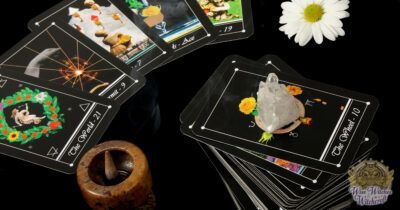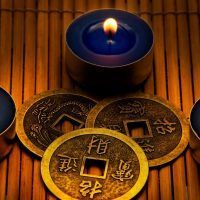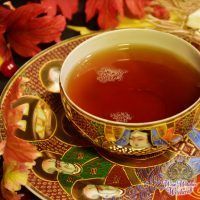Magical Fortunetelling: Making a Flower Tarot
“A flower blossoms for its own joy.”
– Oscar Wilde
The art of using flowers for divination is called floromancy. At first, you might wonder how on earth you could use a flower to foretell the future. In truth, you may have already done so as a child when you picked petals off a daisy saying “s/he loves me, s/he loves me not”. Throughout the world, at various times in history, this application for flowers was fairly commonplace as a somewhat whimsical amusement.
Floromancy Spotlight
Before making your own Floral Tarot it may help to know a little bit about how our ancestors applied flower symbolism in answering nagging questions.
- Anglo-Saxons believed that if you offered a pregnant woman the choice of a lily or a rose and she chose the lily the baby was going to be a boy
- Korean women put three carnations in their hair, one at the top, one in the middle and one at the bottom. If the one at the bottom died first it was an omen of a very difficult life. If the one at the top died first she would only have struggles late in life, and the middle one meant troubles only early in life.
- Dreaming of Jasmine, lilies or marigolds portends good luck.
- Victorians observed the first flower they found in spring, believing it foretold their fortune for the season. If they found one on Monday it was luck, Tuesday – being rewarded for good efforts, Wednesday – a marriage, Thursday – remain cautious, Friday – improving finances, Saturday – coming misfortune and Sunday represented serendipity all spring.
What you will be doing is slightly different than these examples, but they give you some insights into Floromancy’s historical “roots”.
Choosing your Flowers
You can make as many Floral Tarot cards as you wish (i.e. you don’t have to have one flower that corresponds to every Tarot card). In fact you may find the management of a smaller collection a bit less clumsy and more easily memorized. The question then becomes how many flowers you want in your oracle and how you ascribe meanings to those cards.
We suggest having at least 13 cards (13 moons) to which you can assign common magical correspondences for each Flower. For example, Lavender typically represents peace, happiness, healing and love. It comes under the rule of Mercury (quick thinking, messages), the Air Element (communication, intelligence) and has associations with the Zodiac sign of Virgo (organization, methodology). You can use any or all of these associations for how you intend to interpret the card.
Write up your interpretation in both upright and reversed form and put them in your Book of Shadows or type them into a computer file specifically for your Flower Tarot. You want to keep your readings consistent. Keeping notes of each card’s value ensures that.
Decoupage Flower Tarot on Stone, Wood, or Paper
This is a lovely way to make plant oracles for those who cannot draw anything but stick figures. To begin, you’ll need either sturdy art paper (recycled if possible) ora deck of blank cards (which can often be purchased at New Age or Occult gift shops); and similarly-sized flat stones, crystals, or wood slices as the base media. You will also need a good-quality art spray or varnish and clipped images of the flowers you want to use in your set.
Step One: Gathering Images
Look for visually pleasing images that have a definite upright position. The medieval wood engravings of flowers, for example, often show them with blossoms and roots (the blossom at the top indicating your upright positioning). Using these designs can cut your preparation time in half, allowing you to have TWO different meanings for the same card, stone, or wood slice (the upright, and the reversed). For example, if you choose tansy as one of your flowers, the upright position warns of conflict or an outright battle over something near to your heart. Reverse it, and it could mean the end of a conflict and some sort of truce (literally turning over the leaf in energy and meaning, to use a familiar saying).
Step Two: Determine Image Placements
[wisew_rectangle_large align=”left”]Next, take the images you’ve gathered of the plants (be it cut out of a magazine, a photograph, or fabric) and put them on the base’s surface. Move the image around a bit until you find the best placement-the one that feels right to you. It helps to keep the interpretive value of the flower in mind when trying to do this. Then, using a pencil, trace the image onto your chosen surface. Glue the image on that spot.
After the glue dries, you may want to add some type of press-apply lettering that labels the picture (this is entirely optional). You can also add a couple of drops of essential oil to each image so that the visual impact is coupled with aromatherapy for impressive sensual cues.
Step Three: Finishing Touches
Finish the media with art spray, varnish, or lacquer. This not only keeps the image in place but protects the pieces from excess dirt. The choice of glossy or flat finish is purely personal, but I find that a flat finish tends to show off the images better. These need to dry completely. You may want to apply more than one protective coating for added sturdiness.
When all the images are done, look over the set. Does it feel finished? Is something missing? Are any of the images off somehow? If so, now’s the time to fine-tune the oracle. Fix whatever you feel needs fixing so that all the symbols work together harmoniously in your readings. This may require removing or adding a flower.
Step Four: Final Review
Last, but not least, take the time to review each card, stone, or wood slice separately. Now that it’s finished, do you feel the completed work has a different meaning than what you originally intended? The creative process tends to have a special kind of magic all its own that often results in personalized variations. If this happens with your oracle, you need to make notes of interpretive change so you can refer to them later.
A Pressed Flower Oracle
This is a more difficult system to create and will take some time to develop. In this instance, you will actually be gathering fresh plant parts and pressing them for your oracle. There are several advantages to this approach that offset the effort involved. For one, you can time the plant’s gathering to an auspicious moon or astrological phase so that it augments the symbol’s energy. For example, if you were using the moonflower to represent the moon in your oracle, you might gather it by the light of the full moon so it’s saturated with lunar vibrations.
Second, you have nature’s voice speaking to you more directly. Artistic renditions are fine, but there’s nothing quite like the real deal for visual and spiritual impact. The plants already bear the energy signature that created the assigned interpretation. So, it’s quite likely that a pressed flower set will provide more accurate readings.
Step One: The Drying Press
[wisew_rectangle_large align=”right”]To begin with, you will have to make a functional drying press at home; it’s not that hard. Begin with a flat board with 4−6 pieces of plain white paper of the same size as the board on top. On the paper lay your ferns, flowers, and other plant pieces, leaving space in between so that they do not touch each other. Make sure they are not damp from the dew and are completely free of dirt. Put another 4-6 sheets of paper on top of this layer. Continue this way until you have a stack about four to six inches thick. Now, put another board on top of the bundle.
Next, you’ll need two sturdy leather belts. Wrap the belts around the top and the bottom of this pile and pull them as tight as possible.
Step Two: The Drying Process
Once a week, change the blotting paper and retighten the belts. If any of the plants adhere to the paper, just tap the back of the paper and they should come loose. Continue until the plant matter is completely dry and relatively flat.
An Alternative to Drying the Flowers
An alternative to drying is waxing the flowers instead. This works best with semi-flat items like leaves, single petals, and fronds. Pick your item and let it dry a little in the sun. Then put it between two pieces of waxed paper (wax side toward plant) and iron on low heat. This usually leaves the plant close to its original color, with a covering of wax to preserve it. It’s important, however, to take the plant part out of the wax paper before it cools or it will remain stuck between the layers. If that happens, just warm the sheets again with the iron and release your treasure.
Putting the Oracle Together
Once you’ve completed these steps, you can go back to arranging, glueing, and varnishing for a lovely decoupage effect. An alternative to using varnish for your cards is to use a clear plastic laminate over each card (you can often have this done at photocopy stores). The only disadvantage here is that the plastic tends to scratch after a while.
Blessing Your Oracle
After all that hard work, don’t forget to bless and charge your oracle. Blessing invites your image of the Divine to touch and fill your divination tool so it will respond to you more intimately. Generally, blessing is accomplished by holding your hands palm-down over the tool and reciting an invocation or prayer of your choosing. One blessing you can use is:
“Lord of the Sun; Lady Moon see the work of my hands. I ask that you bless this tool to provide insight when my own vision is lacking, or when a friend needs aid. Men in use, let the intuitive energies flow freely, balanced ever by conscious responsibility for my gifts and how I use them. Let all readings be shared for the greatest good, and may I ever hear your voice in my efforts. So be it.”
As with all magick, change the wording so it better suits the tool and your personal path. You need not get fancy here. The god/dess cares more about intention than elaborate words.
When you’re done, leave the oracle, in whatever form you made it, in sunlight for three hours and full moonlight for three hours. This charges the oracle with both conscious and psychic energies so your readings will be balanced. When you notice your oracle begin to give you information that’s “off,” bless it again (this helps eliminate unwanted energies), and recharge it.
Potential Layouts for Your Oracle
There are certainly many more options you can tinker with. No matter which ones you choose, there is something wonderful about using nature for divination. Her gifts are plentiful, meaning each person’s oracle can be as unique as they are.




